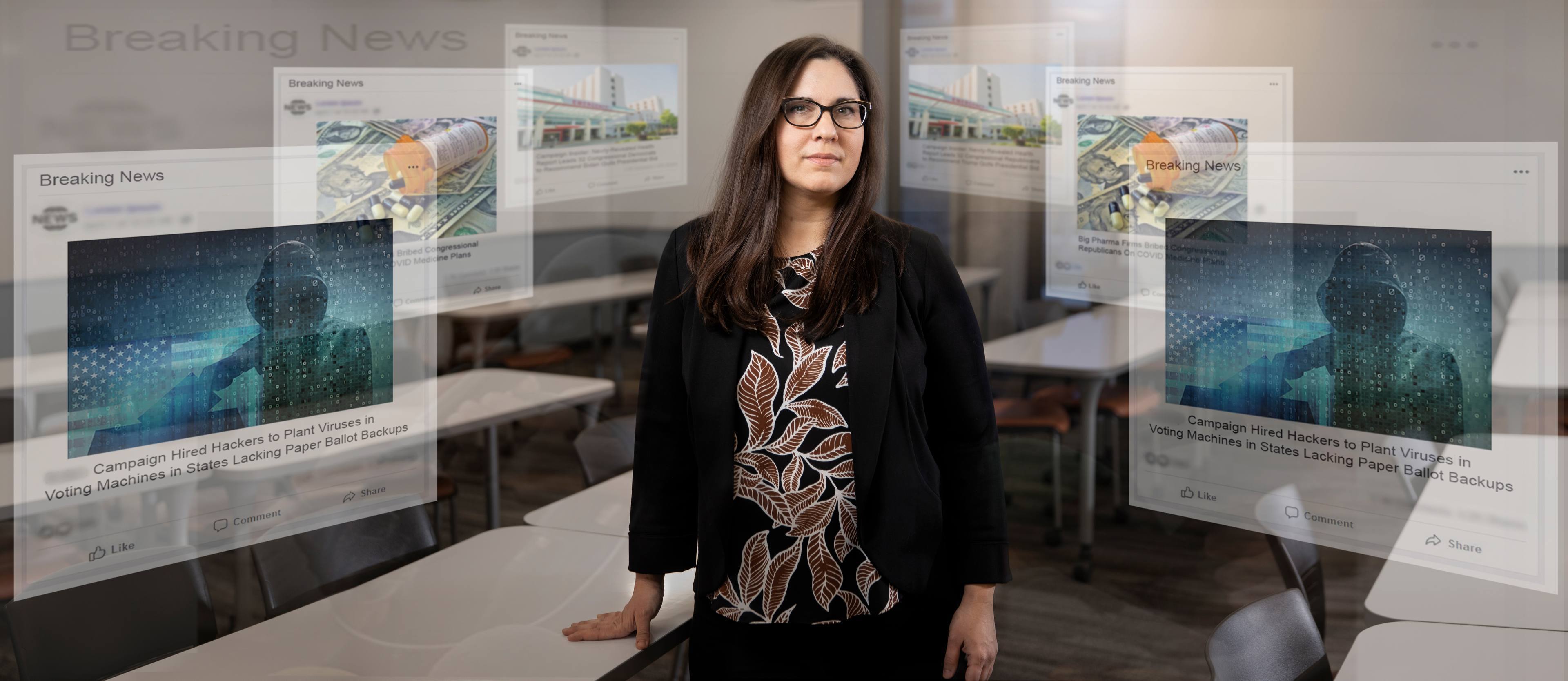
BGSU researcher finds connection between emotions and the spread of misinformation online
Results were based on peoples' emotional reactions and feelings to false headlines
By Michael Bratton
From social media to websites, misleading stories have become a story of their own. When it comes to misinformation, one Bowling Green State University researcher has found that emotions play a part in its spread.
Dr. Christy Galletta Horner, a researcher focused on emotional development, chose to study the emotional effects of so-called "fake news" after seeing a surge in the number of deceptive stories in recent years, particularly online.
"It is so easy to create and disseminate misinformation," Galletta Horner said. "Technology allows anyone with basic computer skills to create seemingly real and legitimate news stories, and people are willing to spread information without fact-checking for themselves."
While focused online, the College of Education and Human Development assistant professor's recent research doesn't veer far from her typical area of study. Galletta Horner regularly researches the role of emotional culture in the promotion of healthy individual and social functioning. She's currently working on a multi-million dollar research project funded by the U.S. Department of Education.
This time, Galletta Horner and her team, consisting of BGSU graduate students and her father, a University of Pittsburgh professor, showed 879 people one of eight politically-focused headlines. Participants were then asked about their feelings toward the false headlines and if they would share them and why.
The results, Galletta Horner said, were surprising.
"A lot of people showed little or no emotional reaction to the headlines and also gave little thought to them being shared, even if they knew a headline was fake," Galletta Horner said.
The team found that participants fell into one of three categories: hot, cold or upset.
Those in the hot group had high emotional reactions—both positive and negative—to "fake news" and were more likely to share misleading information. Meanwhile, those in the upset group, who had negative emotional reactions, were less likely to spread false information and actively worked to combat it by offering fact-checked sources.
A majority of participants, Galletta Horner's team found, fell into the cold group, reporting low emotional responses while also not taking action to prevent false information from being shared, such as calling out a fake headline.
"We hoped that more people would have fallen into the upset group and recognized a fake headline as a problem," Galletta Horner said. "As 'fake news' continues to spread, perhaps people are beginning to accept it as commonplace and therefore aren't taking time to react to it. Either way, it's an issue."
The researchers also found that political party affiliation played a role in whether someone shared a false headline, particularly if it attacked the opposing party.
While algorithms and other sources work to combat "fake news," Galletta Horner said reflecting on our own emotional responses and actions is another tool we can use to stop the spread of misinformation.
"It's definitely not an easy task," Galletta Horner said. "We need to pay more attention to emotions and not just the information itself when it comes to sharing 'fake news.' Helping someone understand why they're sharing something or feeling a certain way, or maybe not at all, is one way to help curb the spread."
Related Stories
Media Contact | Michael Bratton | mbratto@bgsu.edu | 419-372-6349
Updated: 01/26/2022 04:32PM




